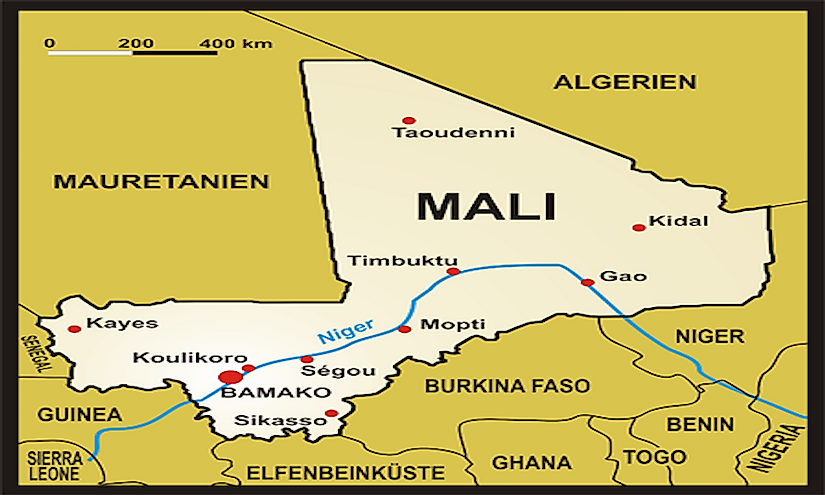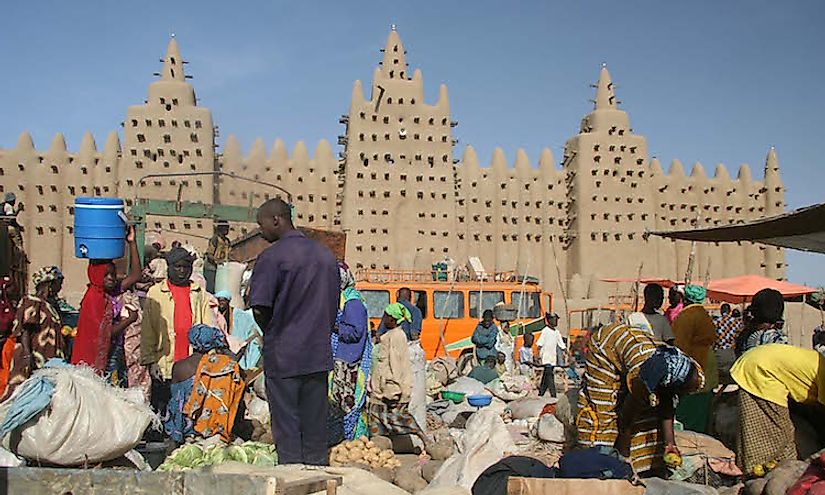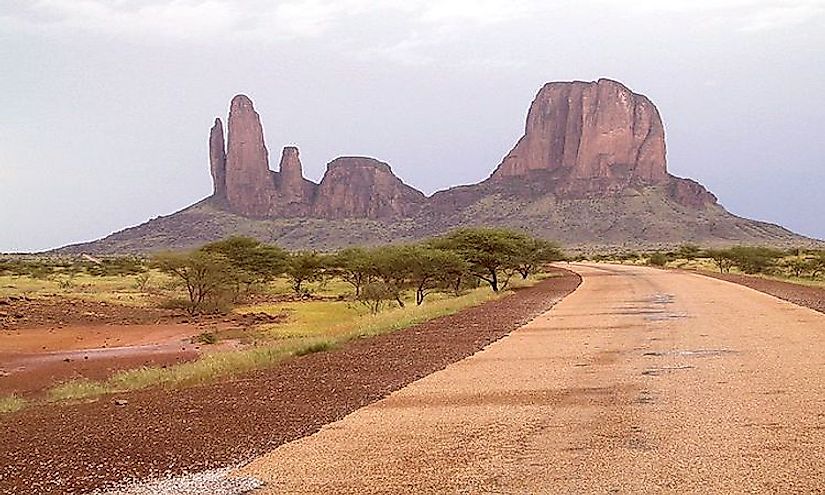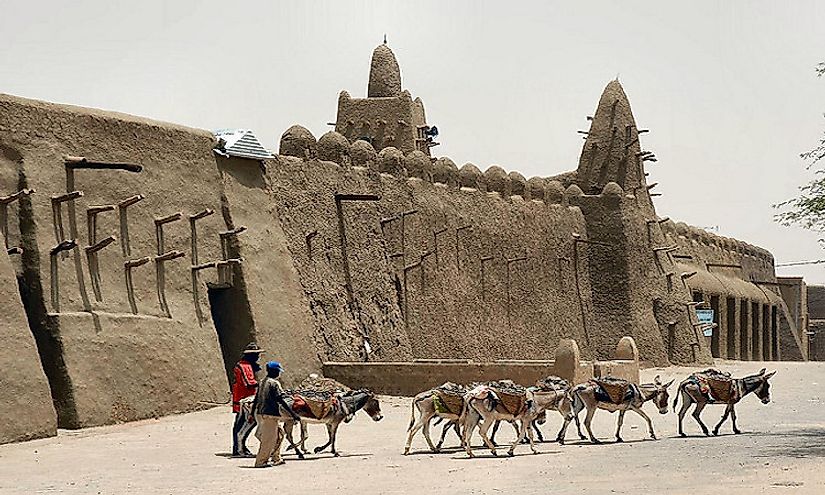Where Is Mali?

Mali gained independence from France in the year 1960 as Mali Federation that comprised the Sudanese Republic and Senegal. A few months later Senegal broke off, and the Sudanese Republic was renamed Mali. The country has been ruled by a dictatorship that was ended in 1991 through a military coup ushering a period of democracy in the country. Alpha Konare won two consecutive presidential elections in 1992 and 1997. After serving for two five-year terms, he stepped down in 2002 and was succeeded by Amadou Toumani Toure in 2007elections that were considered free and fair. In 2012 Toure was overthrown by the military because of handling of the Tuareg ethnic militia in the north who were rebelling against his leadership. Through the Economic Community of West African States (ECOWAS), there was mediations and leadership was returned to the civilian rule when an interim president was appointed. In 2013 election was conducted again and Ibrahim Boubacar Keita was elected the president and is still in office. The northern rebels signed a mediated peace accord in 2015.
The Republic of Mali has a unitary semi-presidential system of government and is divided into eight regions of Gao, Kidal, Kayes, Mopti, Sikasso, Koulikoro, Segou, and Timbuktu (Tombouctou). The president is the head of state, and the incumbent is President Ibrahim Boubacar Keita who was elected to office on September 4, 2013, and the prime minister is the head of the government. The current prime minister is Modibo who was elected to office on January 8, 2015. The cabinet consists of the ministers appointed by the prime minister. The President of Mali is directly elected by the majority vote for a 5-year term and eligible for a second term. The country has had several constitutions, and the latest was drafted in 1991 and approved in 2012, and it was later amended in 1999 and then suspended briefly in 2012. Mali has a unicameral national assembly of 147 seats. Members of Mali's National Assembly are elected directly by popular vote.
Where Is Mali? -
Mali is a landlocked country in West Africa, and it is the 8th largest country in the continent covering an area of 1,240,192km2. It borders seven countries including Algeria, Burkina Faso, Guinea, Cote d'Ivoire, Senegal, Mauritania, and Niger. The capital city of the country is Bamako with a population of 2.515 million people, and the population of the country in 2009 was 14,517,176 and in 2015 it was 17,467,108. Approximately 34.1% of the total land is utilized for Agriculture of which (5.6% is arable, 0.1% is covered with permanent crops, and 28.4% is covered by pasture) and 10.2% is forest cover.
History Of Mali -
Mali played a significant role in the trans-Saharan trade that connected West Africa and the Maghreb. The city of Timbuktu was vital because of its location on the southern part of the Sahara desert and on the banks of river Niger. Its history dates back to the 13th century when the Mali Empire was established. Mali Empire became adopted Islam in the 14th century under the leadership of Musa I and from the time to the 19th century it was an important city in the whole of North Africa for the Muslim world and the Arab slave trade. From 1230 t0 1600 the Mandinka empire was in control that was founded by Sundiata Keita and was famous for its wealth. Mali was influential, and its culture was felt across West Africa as its language, customs, and laws were adopted along the Niger River. The Mali Empire began to weaken in the 15th century but survived to the 16th century. The country fell under different empires over the years until 1892 when French colonized the country and gained its independence in 1960.
Demographics Of Mali -

Mali is a multiethnic country composed of Mande making up 50% of the county's population, Fulani 17%, Voltaic (Senufo/Bwa) 12%, Tuareg/Moore 10%, Songhai 6%, and others making up 4%. The official language of the country is French and has other 13 national languages. There are different languages spoken by the various ethnic groups. Bambara language is spoken by 46.3% of the total population, Peul/Foulfoule 9.4%, Dogon 7.2%, Maraka/Soninke 6.4%, Malinke 5.6%Sonrhai/Djarma 5.6%, Minianka 4.3%, Tamacheq 3.5%, Senoufo 2.6%, Bobo 2.1%.
Mali is predominantly a Muslim country with 94.8% of the population professing the religion, Christians make up 2.4% of the country's population, and there are about 2% following the animist religion and about 0.3% do not identify with any religion.
Climate, Habitat, And Biodiversity -

Mali experiences a subtropical to the arid climate and from February to June, it is always hot and dry, and from June to November it is rainy, humid and mild. From November to February it is wet and dry. In Mali along the banks of river niger and Bani are swamped lakes and channels of the delta that is home to a wide biodiversity including the migratory birds like Palearctic and the West African Manatees. Along the Delta is a habitat for a variety of fish and the natives engage in fishing and farming around the area. The floodplains support the highest density of livestock in Africa, and the whole are now threatened with different anthropogenic pressure and unsustainable utilization. The inner parts of the Niger Delta is a habitat for some wetland birds and approximately 500,000 garganeys, and 200,000 pintails come here in winter, besides a large number of ferruginous duck, white-winged tern, ruff, black-tailed godwit and other types of bird waters. The area is also the breeding ground for the African spoonbills and the purple swamphens. The floodplains are also a habitat for the famous Nile crocodile. The mammals in the region also include a variety of the Sahelian species like the patas monkey, Libyan Stripped weasel, caracal, serval, stripped hyena, sand fox, and African wild cat
Economy Of Mali -
Mali is ranked among the poorest countries in the world, and its economy depends on agriculture and mining. The fiscal status of Mali fluctuates with agricultural commodity prices and gold. The primary export earnings are from cotton and gold which make up 80% of all earnings. The country relies heavy on foreign aid, and most economic activity is limited to the riverine regions where it is irrigation from Niger River is utilized. About 65% of the land in the country is desert or semi-desert. Approximately 10% of the population in Mali lead a nomadic life and about 80% of the labor force is in farming and fishing. Agriculture makes up 38.5% of the country's GDP, while the industry is contributing 23.3% of the GDP and service sector contributes 38.2% of the GDP. The currency of the country is West African CFA franc (XOF) and the country's total GDP estimate for 2016 is $30.990 billion.
Tourism And Tourist Activities In Mali -

Mali has several tourist sites thanks to its rich historical sites dating back to several wealthy kingdoms that dominated the regions. Popular tourist attractions in the country include the monuments, Zoos, and Parks in Bamako. In Timbuktu, there are mausoleums, rivers and the rich history of the city as a center of the West African slave trade. Other sites include Djenne and Gao.
Where Is Mali?
| Capital and largest city | Bamako |
|---|---|
| Area (Total) | 1,240,192 km2 |
| Population (2009) | 14,517,176 |
| GDP (Total) | $30.990 billion |
| Currency | West African CFA franc (XOF) |
| Time zone | GMT (UTC+0) |
| Government | Unitary semi-presidential republic |
| Official Language | French |
| Ethnic groups | 50% Mande 17% Fula 12% Voltaic (Senufo / Bwa) 10% Tuareg / Moor 6% Songhai 4% other |







